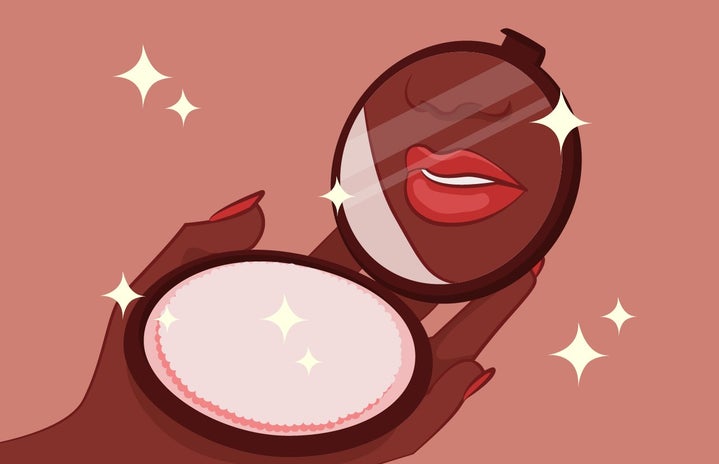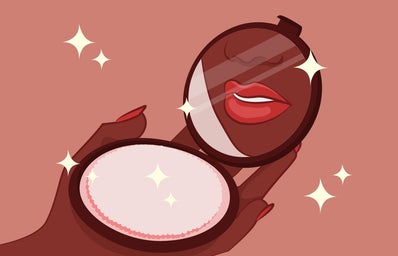All my life, I have felt like I’ve wanted to change my physical appearance, even subconsciously. Although I have grown on this journey of self-love and self-acceptance, there are times when I feel insecure in how my appearance differs from most of the standards of beauty that we as a society in America see on a daily basis.
I used to feel like I was “ugly” because I did not fit into the stereotype of an it-girl, the “beauty queen” that is constantly being thrown at us through mainstream media.
Looking back at my adolescent self, I wish I had ignored the voices of doubt that crawled into my ear every time I would see a side character that identified as a woman of color getting pushed to the side for the protagonist, who was usually a tall white girl with fair skin, light hair, and blue eyes.
We can’t blame the media and lack of representation for our ideological fascination with converting to Eurocentric beauty standards, though. It is a historic stereotype that is portrayed in many films and television shows, one that we’ve all grown up with and idolized, even from an early age. It goes back generations, and deals with internalized white-washing of characters, and of untrue troupes and generalizations of minorities.
I used to wish that I was more like those main characters on T.V., which led to me wishing that I looked more “white.” My biracial facial features, my smaller height, the curves in my hips, and more, were all reminders that I was not the “white girl” main character in all of those shows and advertisements. It made me feel less seen and therefore, tricked me into believing that it made sense when my younger self was not given full priority like the girls who fit the mold of what our societal expectations desired.
I tried to convert my identity in multiple ways, and a lot of this still affects how I sometimes view my physical appearance. It’s hard to think that looks don’t matter, because even subconsciously, for many people, they do.
However, I believe that it is our job now as a more educated and aware generation to fix these ideals of beauty and work to make them more inclusive and diverse in order to empower, well, EVERYONE.
The media’s Eurocentric beauty standards are poisonous in our society because oftentimes, women who don’t fit the cookie-cutter mold, and even women of color, feel pressured to adapt to impossible ideals of beauty in the first place. Today, I understand the limitations in the media from when we were growing up, and I hold no jealousy in my heart for those girls who were born looking like that.
You see, we are all different and that is our superpower.
I think that every person is beautiful in their own way, and it’s with this mindset that I have started to believe in myself and grow in my self-confidence. If I want to look a certain way, I have to reflect if this is something I truly want or something that I feel will help me feel like I belong here.
For example, when I dyed my hair blonde, I felt like I was doing it for me, rather than attempting to fit into a “white-girl stereotype.” It was a bold decision that empowered me and still allows me to strive to be the best version of myself possible. It was made for the right reasons of trying something new, and I rest comfortably knowing that anyone can go blonde and change their hair if they desire to do so. I am confident in this physical choice about my appearance because this decision was made not to conform, but rather to build me up and create myself without throwing away anything else about my identity.
However, I do believe that expanding the girth of diverse representation in mainstream media is an important subject that we as a society need to address. There is no one definition of beautiful, and for those people like me who identify as minorities, seeing people who look like us is important in reminding us that we matter, too.
I love being biracial and being half-Polish and half-Filipino. I think my identity is always something I’ve struggled with, and I am consistently working hard now to make sure I can embrace who I am, without letting go of my roots and my pride of having multiple cultures in my family.
Thus, having diverse and inclusive representation being spread in mainstream media is crucial. In the news, in broadcast journalism, in social media, with influencers, and in films, we can’t focus on generalizing an entire race or minority to one stereotype. This is harmful and limits people’s identities, instead of allowing everyone to understand that as human beings, we are all multi-dimensional and worthwhile.
I want diverse representation, not just for me, but also for the diverse range of people who identify as minorities. For people who are underrepresented in the media, especially for disabled individuals, LGBTQIA+ folk, people of different religions, and people who are not Caucasian, but are Black, Indigeneous, Latinx, African, Asian, or mixed.
We have to educate ourselves and work on our thoughts by taking some time to wonder where they come from in the first place. Sometimes it is a challenge, but it’s worth it to dive deeper and address where our ideals of beauty come from.
Thus, something that we can all do to expand diversity in mainstream media, is to support inclusivity and different organizations and influencers who are working to create proactive and lasting change. It was actually when I decided to pick myself up by the boot-straps and start believing in myself for once, that I started to feel more powerful and more beautiful, too.
For example, YouTube influencers like Nabela Noor inspire me to be unapologetically myself while speaking out about these important societal issues of fair and inclusive representation in mainstream media. Her beauty channel and lifestyle vlogs reflect not the past hate speech and insults she’s gotten from people for looking a certain way, but instead, demonstrate her resilience and confidence in embracing her Bengladesh roots and culture while making a name for herself in the U.S.
Body-positive and minority influencers such as Nabela help me to feel seen and welcomed for just being myself, in a society that has oftentimes tried to get me to conform or believe otherwise.
Furthermore, popular, high-budget films such as the fan-favorite Crazy, Rich Asians are revolutionary, and mean so much to me and other people who identify as Asian. The characters are multi-dimensional and don’t fit into a singular category; instead, they are diverse, gorgeous, and unique from one another, and their differences in personality and appearance are celebrated rather than generalized. I can see people who remind me of my family members and friends, and it is a glorious feeling of finally feeling represented and not stereotyped.
All in all, diverse and inclusive representation in mainstream media is important. It helps all of us to feel like we are being empowered and respected, as well as seen, heard, valued, and loved.
And it’s good to remind us all that hey, you don’t have to be pretty like her. You can appreciate her, and still be pretty like you.
You’re beautiful, friend. It’s time you started seeing it.


